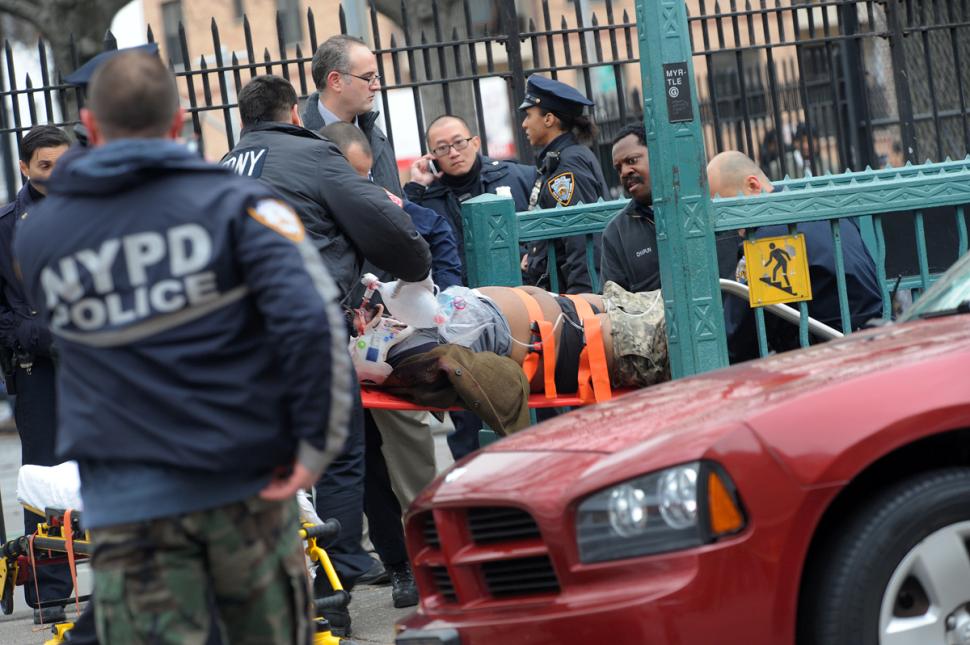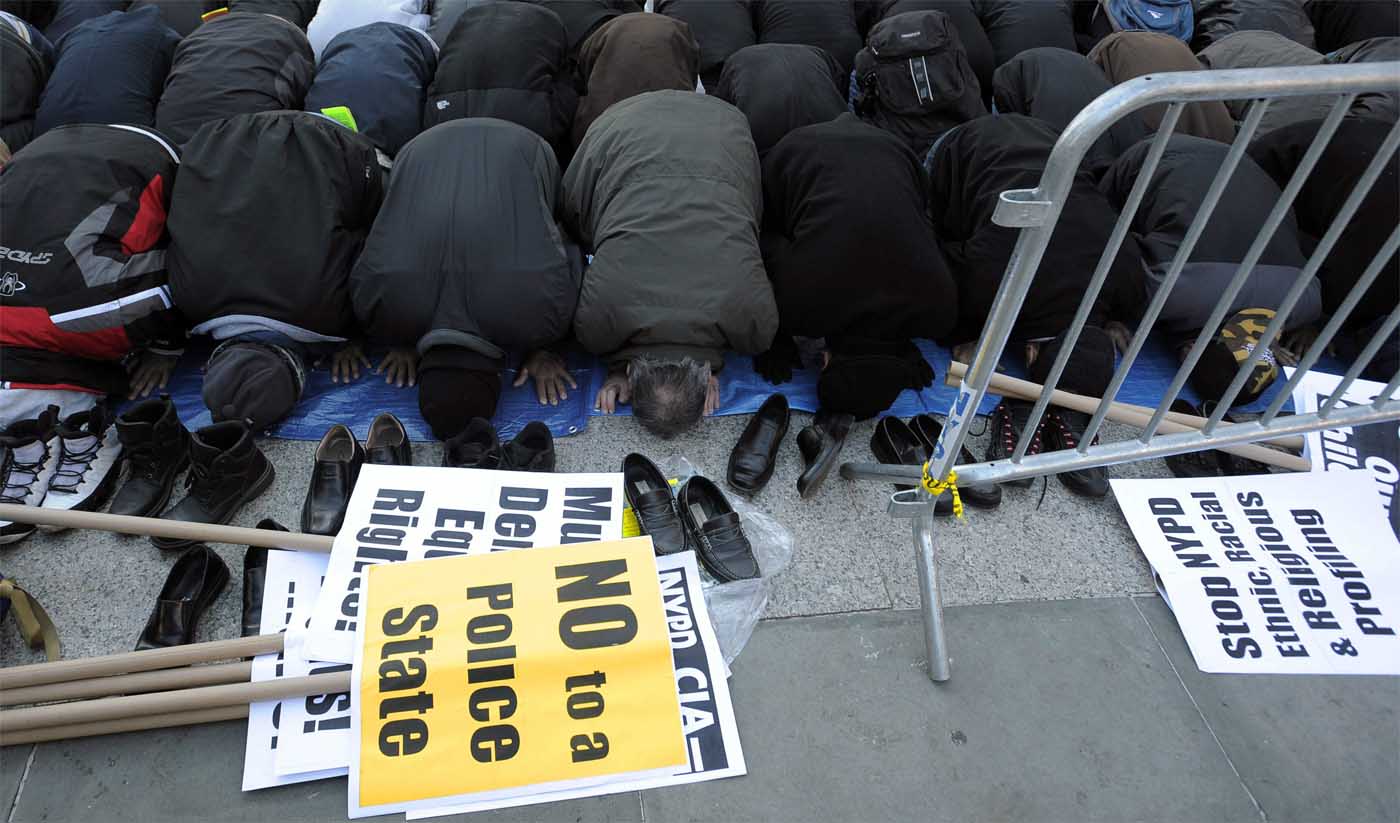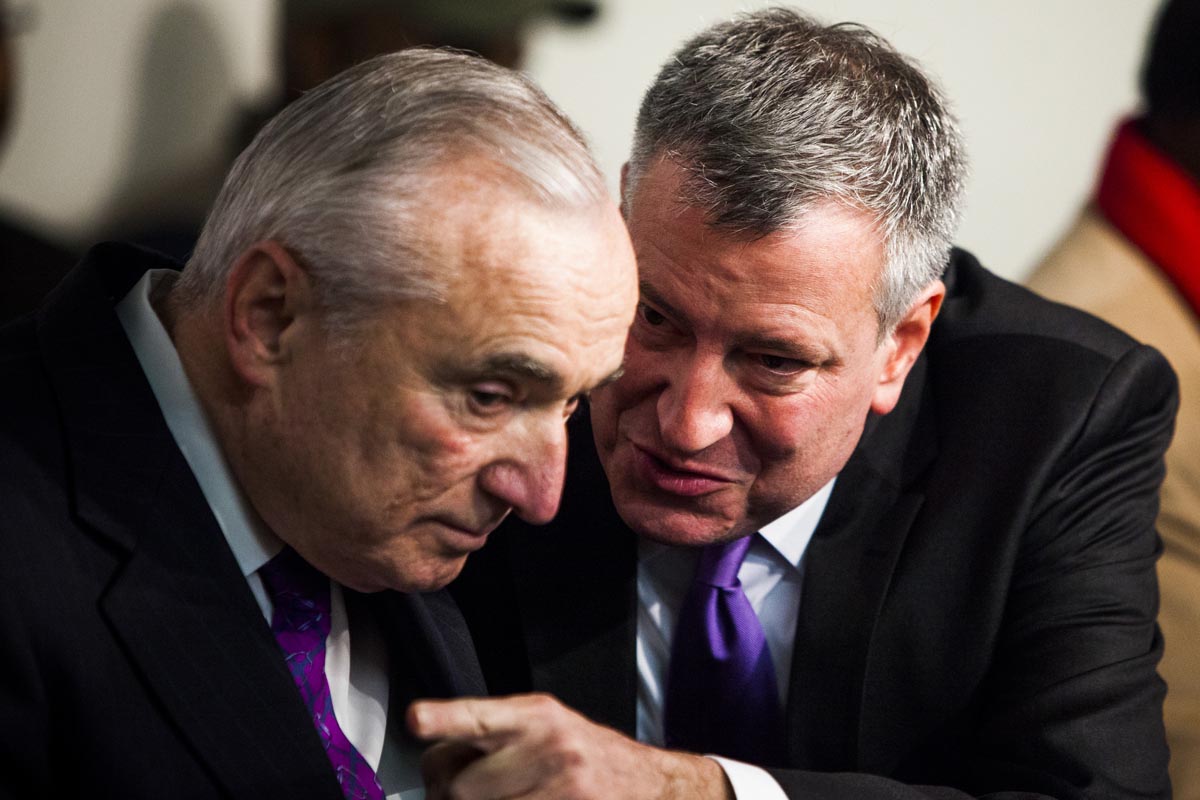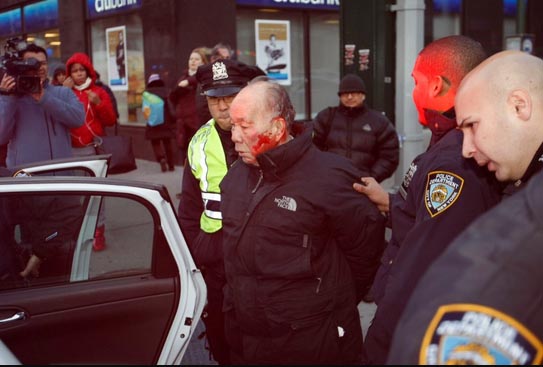Arun Kundnani is most recently the author of The Muslims Are Coming.
Author: Arun Kundnani
Listen: Play in new window | Download
Subjects Discussed: How Islamophobia came to be, how the Obama Administration has continued an Islamophobic policy, the good Muslim and bad Muslim framework, Bernard Lewis’s “The Roots of Muslim Rage” as one of the key foundational Islamophobic texts, bogus terrorist studies that reinforce counterterrorism studies within the national security apparatus, flawed FBI radicalization models, how philosophical academics are making ideology virulent, Faisal Shahzad’s attempts to bomb Times Square, the Boston Marathon bombing, the NYPD’s “Radicalization in the West” study used to justify its Muslim surveillance efforts, Minority Report, zero tolerance, whether society or specific individuals should be blamed for Islamophobia, societal culpability in policy changes, changing the conversation about terrorism, the need to get out of 9/11’s shadows to address present realities, why Muslims who make any political statement are categorized as terrorists, fear in the Muslim community, Edward Snowden, how surveillance affects specific communities, the death of Fred Phelps, whether some over-the-top extremism is necessary to galvanize a civil rights movement, Martin Luther King’s “Letter from a Birmingham Jail,” when notable figures for justice embrace extremist labels, the queer movement, Malcolm X, the sudden transformation of Muslims into the “enemy” after 9/11, class distinctions and Islamophobia, the Prevent program adopted in the UK, New Labour’s culpability in misidentifying Muslims as “radical,” the Salafi movement, failed efforts to promote a counterextremism narrative, Homeland‘s Nick Brody and the inability of contemporary narratives to allow for a Muslim character to have a political voice that isn’t extremist, the vicious campaign to paint All-American Muslim as propaganda and the conservative effort to shut the show down, the Somali population in the Twin Cities, the al-Shabaab ring in Minneapolis, Congressman Peter King’s Islamophobic statements about mosques, when attempts to preserve constitutional rights are reframed as “noncooperation,” Operation Rhino, St. Paul’s AIMCOP program funded by a $670,000 DHS grant, law enforcement tenor dictated by power and money, the arrest of Najibullah Zazi, hyperbolic clampdowns on Islamic communities after an attempted plot is thwarted, financial incentives by local police departments to continue flawed counterterrorism strategies to receive federal grant money, fusion centers, why so much of surveillance and prosecution rationale is rooted in Muslim stereotypes, what can be done with the wasted resources, the Muslim Brotherhood’s fluctuating status as movement and terrorist organization by U.S. authorities, Mohamed Morsi, whether or not Western nations can view organizations in subtle terms, comparisons between the Cold War and ongoing American foreign policy ideas about Islam, the Egyptian revolution, the sharia conspiracy theory adopted by neoconservative Islamophobes that Islamic terrorism is the beginning of a hidden jihad, why Islamophobes like Robert Spencer and Frank Gaffney are able to infiltrate the mainstream, conspiracy theories and racist discourse, the English Defence League, Islamophobia promulgated by David Cameron, the lack of self-awareness among far-right groups, how Islamophobic groups have adopted the media strategies of the Left, neo-Nazis who rebrand themselves, positive developments, New York Muslims protesting NYPD surveillance programs, and how the generation of young Muslims can change present intolerance.
EXCERPT FROM SHOW:
Correspondent: So let’s go ahead and start off with why Islamophobia exists. The first and most obvious question is why any political strand of Islam, any vocal element that objects to an attack has come to be associated with terrorism. So I have to ask. Why has this continued twelve and a half years after September 11th? Why are all Muslims roped up into this misleading category?
Kundnani: One of the interesting things I think is that we had that early period in the War on Terror under the Bush years where we had this quite intense narrative of a clash of civilizations between Islam and the West. And Obama came in, trying to have a different kind of analysis. And actually what’s interesting is that the kind of popular Islamophobia in the media, the amount of racist violence against Muslims in the United States, it all went up under Obama. So in my analysis, what’s going on here is, as well as the kind of neoconservative narrative of a clash of civilizations, we also need to think about the liberal Islamophobia that’s been much more powerful under the Obama administration over the last few years.
Correspondent: What do you think the ultimate appeal of the Obama trigger effect here is for Islamophobia? Why have liberals fanned the flames here, do you think? Is it just a misunderstanding of policy? I can get into this further later on in this, but I wanted to get a general idea here.
Kundnani: I think, at root, what’s going on here is a kind of flawed analysis of what the causes of terrorism are. There’s a liberal analysis that says, basically, that some kind of religious extremism causes terrorism. And therefore you need to intervene in Muslim populations to make sure that people have the right interpretation of Islam. That’s actually the kind of basic analysis that we’ve had in this kind of later period of the War on Terror. Which means that you’re associating some interpretation of Islam with terrorism, right? And then from that flows all kinds of other things. So, for example, then you get the idea of the good Muslim and the bad Muslim, right? Because the bad Muslim is the one who interprets the religion in the wrong ways. So you want to put Muslims under surveillance to check that they have the right interpretation of their religion, etcetera, right? So I think a lot of what we’ve seen under Obama flows from that fundamental analysis, which actually doesn’t stand up to scrutiny.
Correspondent: If it’s so flawed and it does not stand up to scrutiny, why then does it continue to perpetuate?
Kundnani: Well, one of the reasons is because from the liberal point of view, it seems like a better way of doing things than the kind of neoconservative clash of civilizations model, right? It has certain practical benefits from the point of view of managing this issue, right? This kind of fraught issue with all this fear ground up in the popular mind. So it enables you to say, “Well, you know, we’re partnering with Muslim communities to tackle extremism” and so forth. That sounds quite nice. That sounds quite effective. Even though the basic assumptions behind it don’t stand up to scrutiny.
Correspondent: You identify two strains of thinking about Islamic extremism in your book. The culturalists, who believe that Muslim communities are incapable of adapting to modern life because their Islamic culture essentially is extreme and is therefore incompatible, which leads to extremism. Then you have the reformists, who look not to Islamic teachings but ideologues who reinterpret Islam for violent and nefarious purposes. How could one article — Bernard Lewis’s “The Roots of Muslim Rage” in 1990 — be so prominently responsible for the development of these two ideas? Why do they continue to endure? Why do they continue to be so compelling? I mean, it seems to me that there are so many arguments against them. Yet these two ideological strains continue.
Kundnani: Right. Intellectually, the argument has been discredited time and time again. And so the reason that these ideas continue to circulate has nothing to do with their intellectual merit. But it’s more about the political convenience of those ideas. So we find it much easier to think about why people want to direct violence against our society. We find it much easier to answer that question by saying it’s their culture rather than, at least in part, our politics. And so I think because it’s uncomfortable for us to think about what the alternative to these narratives would be — the alternative to these narratives which involve us thinking about our foreign policy and the political effects of that in creating contexts within which terrorism becomes more likely — it’s much easier, rather than having that difficult conversation, it’s much easier to say it’s their culture, right? Or it’s not their culture, but it’s a minority who have adopted this ideology of extremism and that’s what causing it.
Correspondent: But we’ve had twenty years of this strain in both British and American society. Surely that’s enough time for people to perhaps call it into question or to actually think about it more sophisticatedly. And I’m wondering why — I keep going to the question “Why?” But I am trying to get something a little more specific over why this is still of appeal.
Kundnani: Some of the answers to that are about the ways in which it’s been institutionalized in various settings, right? So for example, since 9/11, we’ve had terrorism studies departments created with government funding in the United States and in Britain. And those terrorism studies departments have a set of incentives in terms of the funding and so forth to produce certain kinds of knowledge that serve the interests of the national security apparatus. So they will tend to avoid asking deeper questions about what lies behind violence, what is the politics of that, and instead try and deliver policy solutions that have embedded within them all kinds of assumptions about what they call radicalization. So that kind of institutionalizes these ways of thinking in a whole set of academic departments. Then you have these ways of thinking being institutionalized in the national security agencies. The FBI, for example, has a radicalization model. It’s an analysis of how someone goes from being an ordinary person to becoming a terrorist. Embedded within that is these same ideas of some kind of religious ideology driving it. The New York Police Department does the same thing. So all these ways of thinking are not just kind of free-floating in some kind of intellectual depaint. They are embedded in policy and practice in institutions.
Correspondent: Would you say that academics have essentially been influencing this interpretation for the last twenty years? I mean, there was a strain of articles recently about academics complaining about how they don’t actually get through to the masses. But this would seem to suggest that they are in a very nefarious way.
Kundnani: Absolutely. If you’re an academic and you want to be influential in government policy, be an academic in terrorism studies. Because that’s where you’re in and out of government departments. But what you have to give up is actually quite a large degree of scholarly independence. Because you’re effectively serving the intellectual needs of the government rather than any kind of idea of an objective independent study of what causes terrorism. That doesn’t really happen. So I think academics have been influential. Both the terrorism studies academics and the other ones — like Bernard Lewis and Samuel Huntington — some of those folks who are more on the philosophical level and geopolitical level who are thinking about these issues.
Correspondent: So if you get a philosophical academic, it could essentially activate a strain of virulent ideology.
Kundnani: Absolutely. Ultimately, all our kind of different forms of racism and so forth have some kind of intellectual history. They go back to people who innovate, who come up with new ways of being racist in an intellectual setting. And then that filters down to the streets over time. That’s how racism originates.
Correspondent: Sure. So you point to a time in the United States when this nation was considered more tolerant and inclusive towards Muslims. Immune from Muslim radicalization because of the apparent belief that a free market society was better at absorbing Muslims. That changed in 2009. There were a number of violent incidents that were believed to be associated with Islam, including Faisal Shahzad’s failed efforts to detonate a car bomb in Times Square. You point to a 2010 Bipartisan Policy Center report which concluded that the American melting pot had not provided protection against Muslim radicalization. Why were the government, the pundits, and the policy people so willing to change their tune in so short a time? Because that seems to me also a big part of this problem as well.
Kundnani: Right. So something interesting happens in the first few years of the Obama Administration, where you find that you do have one or two attempted terrorist plots that were serious plots, like the attempted car bombing in Times Square by Faisal Shahzad and one or two others. You also have a set of developments that happen in the FBI, where they’re starting to change how they do counterterrorism and becoming much more pro-active in sting operations, in bringing charges to some of the material support for terrorism, which involves criminalizing people’s ideological expressive activities rather than actual terrorist plots. So those kinds of things from the FBI drive up the numbers in terms of the kind of annual statistics on a number of attempted terrorist acts.
Correspondent: Drive up the numbers exactly how?
Kundnani: Well, because one of the things that we’ve seen is the FBI doing something when they have someone who seems to have what they would call an extremist ideology. Put informants in that person’s life and use these tactics of trying to pressurizing that person into being involved in an imaginary plot that would probably not have been something that they would have been predisposed to were it not for the FBI coming in and creating that environment around that person’s life. And this is something that the RAND Corporation has a very good phrase to describe. They call it “lubricating that person’s decision making” through government intervention. So I think the FBI started to put a lot more resources in doing those kinds of operations. Then the numbers come up. So it looks like we’ve got this objective increase in attempted terrorist plots, but actually it’s at least to a large degree the result of a change in FBI strategy around that time.
Correspondent: So you’re saying that the FBI essentially was cooking the books to get higher crime statistics. Is that what you’re basically saying?
Kundnani: Well, in effect, that’s what happened. I’m not sure that it’s some kind of conspiracy by senior leaders in the FBI to…
Correspondent: It’s a policy change.
Kundnani: It’s a policy change. And obviously you can see an incentive structure there where the FBI, as a result of doing that, seems like it’s a very efficient counterterrorism organization. Because it’s got all these terrorist plots happening in the United States and every single one of them is getting a conviction and that looks good on the annual report to Congress. What you won’t know unless you look in more detail is the fact that most of those plots are ones that the FBI itself has invented.
Correspondent: I’d like to get into the fine details of the radicalization model that the FBI was using in just a bit, but I want to actually ask did they essentially have this policy change before they had the radicalization model? What does your research suggest here?
Kudnani: The radicalization model goes back to the early years after 9/11. The policy shift, I mean, we don’t know what caused it. It may be that there had been a number of changes in legislation that came through in that period and it may be that new options were created for that. It may be that if you look at the data for terrorism convictions around that time, sort of 2008 and 2009, a big chunk of the people who were getting prosecuted is Somali Americans, who are traveling to Somalia to fight with al-Shabaab, which is designated a terrorist organization shortly before that moment. And so therefore, traveling over there becomes a felonious act. So that also becomes another of these kind of scare scenarios around that time, that maybe we’re going to have a huge problem of American Somalis going off to fight for al-Shabaab and coming back and committing acts of violence here, which actually never happened.
Correspondent: I will get into the Somali situation in just a sec, but I want to actually unpack the radicalization model a bit. You cite this 2006 memo from the Counterterrorism Division which suggests anger, watching inflammatory speeches online, an individual identifying with an extremist cause, Internet interaction with extremist elements, and acceptance of radical ideology, and eventually terrorism. What is the academic basis for this model? You also mention this 2007 NYPD study called “Radicalization in the West” that adopted a simplified version of models that were adopted by Quentin Wiktorowicz and Marc Sageman. What has made these specific ideas stick? Why hasn’t law enforcement passed a wider research net before adopting these models? Why are these radicalization models in place? They seem to me to be more like a sudoku puzzle.
Kudnani: Right. I mean, these radicalization models have come from — you mentioned the two key people here, Marc Sageman and Quentin Wiktorowicz, both of whom have a history within the intelligence world as well as in the academic world. They kind of cross those divisions. I think the reason those models have been used to the exclusion of any other kind of analysis and the reason that they’ve stuck is because they do something very important for the FBI and the NYPD — at least at first glance, which is they give them a tool for prediction.
Correspondent: Precog. Minority Report.
Kundnani: Right. This is Minority Report. It’s a way of saying, “We have a way of knowing who’s going to be a terrorist tomorrow. Even though they’re not a terrorist today.” And so having that claim to predictive power is what lies beneath the appeal of these studies.
Correspondent: And the problem with this is that they wake up from the amniotic fluid and instead of crying “Murder!” they say “Muslims!” So that’s problematic.
Kundnani: And they don’t stand up in terms of having that predictive capability. And that’s kind of obvious when you think it through. It would be ridiculous to think that someone growing a beard, which is one of the indicators, is a predictor of someone on the way to becoming a terrorist. Or someone wearing traditional Islamic clothing or joining a pro-Muslim social group. These are the various things that these studies talk about. So they don’t have this predictive power. But because they’re perceived as doing so, they become very important in these institutional settings and enforcement agencies.
Correspondent: Perceived by who?
Kundnani: By law enforcement agencies and by policy makers in DC. So the FBI has been instructed by the federal government since very soon after 9/11 to adopt what is called a preemptive approach to counterterrorism, right? Which means don’t wait until someone’s committing a crime. Go back to some point before that person’s committed a crime and arrest them there or intervene in their lives there. So from the point of view of the FBI, there’s a dilemma there. How on earth do you criminalize someone who hasn’t committed a crime yet but you think may do in the future? You have to have some kind of analytic way of predicting behavior. And so that’s the dilemma for them.
Correspondent: But if it’s a corrupted analytical model, surely there’s someone inside the FBI or even the NYPD who is basically saying, “You know, this doesn’t really cut mustard. We’re actually only doing this to get our numbers up.” Were you able to uncover…
Kundnani: I spent a bit of time interviewing a number of different FBI agents who work in counterterrorism and I put that question to them as well. And their answer was, “Well, if you think this radicalization model doesn’t work,” which they were open to that possibility that it doesn’t stand up in terms of its academic merits, “then give us another model that will do the same job.”
Correspondent: So they just need some kind of model.
Kundnani: Yeah. Because they’ve been told you need to predict. You can’t just go on what someone’s done. You need to go on what they’re about to do. That’s how counterterrorism works in the United States post-9/11. So for them, it’s not an option to say, “Okay, let’s just focus on who is actively involved in preparing a terrorist plot, who’s inciting terrorism, and who’s financing terrorism.” That would be my argument. What we should be doing here is focusing on that. And that gives us enough to be getting onward and has the advantage that we don’t widen our search to this kind of vague notion of ideology, which gets messy and uses up our hard-earned resources on things that we shouldn’t be worried about. Now that is not an option for the FBI. Because that’s what we as a society have told them that we don’t want. We don’t want them to wait. We want them to be preemptive.
Correspondent: We as a society? I mean, that seems really amorphous. Isn’t there some specific person who we can identify and say, “That is the person who caused this requirement, that the FBI…”
Kundnani: I don’t think so.
Correspondent: Really?
Kundnani: I think if you look at — for example, early on in the Obama Administration, there was the so-called underwear bomber. And if you talk to people in the Obama Administration, they will talk about that being a very scary moment for them because they felt for a moment, in the aftermath of that attempted attack, they lost the narrative. They were very much on the defensive. And for a moment, they thought, “We’re going to have this thing hanging over us that we weren’t tough enough on terrorism and we almost let this guy through.” And then they basically made the decision thereafter that we can’t allow that to happen again. Because if that hangs over us, we lose the political capital to do all the other things we want to do. So even if you convince people in the Obama Administration to do things a different way, they would say, “Our hands are tied by what society expects of us.” The fear in society around these things. The fact that we have now created a society in which it’s not enough to say we will minimize the risk of terrorism.
Correspondent: You have the zero tolerance thing.
Kundnani: Right. What society expects is absolutely no terrorist attacks of any kind at all and do everything possible with unlimited resources to deal with this problem. Even though we’ve had the Boston Marathon last year, dozens of people in jail, and three people killed. But we have 15,000 murders every year in the United States. So in terms of an objective assessment of the amount of harm that counterterrorism does to U.S. society, it would not be our top priority. But it has become our top priority. Half of the FBI’s budget is dedicated to counterterrorism.
Correspondent: But I don’t know if that’s really — that’s an answer that just doesn’t sit well with me. The idea that society is the one to blame when you’re using a flawed radicalization model to enforce counterterrorism, which actually isn’t true based off of some of the findings in your book, and you’re reinforcing stereotypes and you’re also disseminating further fear into the American clime, it seems to me that you’re the one responsible for generating the way that people react, that is this very society that people point to…
Kundnani: Sure. Sure.
Correspondent: I mean, I’m asking for some….there needs to be some person. Some kind of element here.
Kundnani: I think there’s all kinds of different agencies and individuals that are culpable here. No doubt. From the top down. From Obama, the leadership at the FBI, the whole national security apparatus. All of these different agencies and individuals are bound up in a set of practices that are causing great harm to our fellow citizens in the United States. But I would also say it’s a little bit too easy just to stop there. I would say we have all kind of got sucked into this culture of counterterrorism. The word “radicalization” is not just a word that you see in academic studies and police reports. It’s the word that is now in our everyday language, in how we talk about terrorism. We didn’t need the word “radicalization” fifteen years ago to talk about terrorism. But now it’s the normal way that we do it. So, for me, it’s a little bit too neat to pin the blame on government agencies. We need to acknowledge that there’s a cultural change we need in society more widely.
(Loops for this program provided by Martin Minor, danke, DesignedImpression, Blueeskies, and drkcarnivalninja.)
The Bat Segundo Show #540: Islamophobia, Extremism, and the War on Terror: Arun Kundnani (Download MP3)
This text will be replaced




